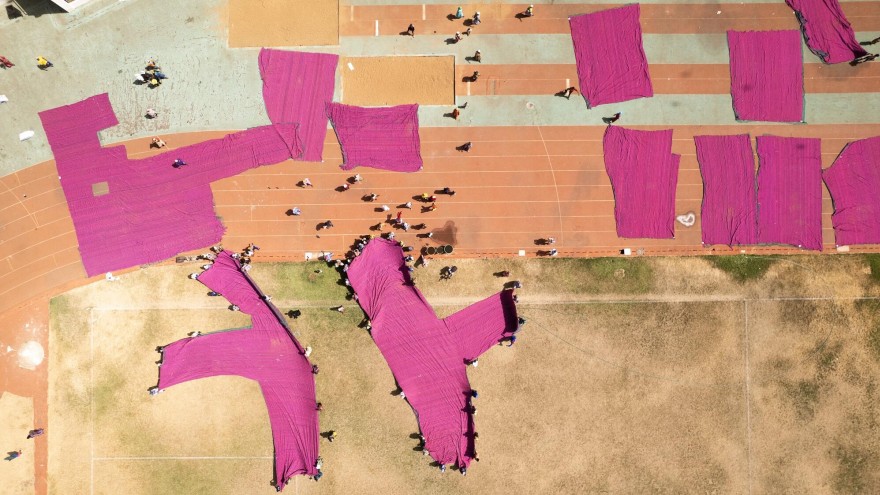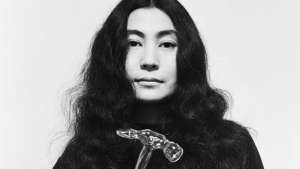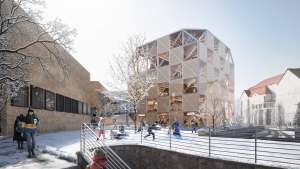Commissioned as part of the Unravel: The Power & Politics of Textiles in Art exhibition at the Barbican Centre in London, Ghanaian artist and Design Indaba alum Ibrahim Mahama has transformed the Lakeside Terrace of the performing arts centre with his latest installation of swathes of fabric, created in collaboration with craftspeople from Tamale in Ghana.
Purple Hibiscus’, named after Chimamanda Ngozi Adichie’s eponymous 2003 novel, is an ambitious installation wrapping the façade of the centre with 2 000 square metres of bright pink fabric panels featuring approximately 100 embroidered ‘batakaris’ – robes worn by both Northern Ghanaian royals and ordinary people.
The batakaris were collected by Mahama from numerous communities across northern Ghana through a process of exchange and barter. These precious textiles, often saved by families over generations, tucked away in wardrobes or stored below beds, carry the imprints of the lives, lineage and power of the figures they once clothed. ‘Worn, degraded and bearing traces of years of use, these smocks are testament to the endurance of traditional belief systems, and the continued relevance of intergenerational knowledge,’ explains the Barbican. ‘Incorporating these smocks into the commission carries forward Mahama’s deep interest in the life cycles of textiles and what can be learnt from the historical memories embedded within them.’
Mahama collaborated with hundreds of weavers and sewing collectives from Tamale for this project. The pieces are so large that, on days when matches weren’t taking place, the artist rented the Tamale football stadium so the work could be spread out on the ground as it was sewn.
The artist commented, ‘It’s like doing plastic surgery, but this time you require a soul that dwells within the body, which is immaterial to build on the physical material. Collecting the individual smocks from communities can be quite challenging, but also opens up a portal of new formal aesthetics.
‘Using the Alui Mahama sports stadium as the primary studio space for the production of “Purple Hibiscus'' allowed us to organise the different layers of the work in ways we couldn’t have possibly imagined. The scale of the material forms needed some level of freedom, which the space gifted.’
Viewed together, the hand-stitched panels of ‘Purple Hibiscus’ and the hand-pitted concrete of the Barbican’s rough concrete façade offer a reflection on the power and significance of collective labour.
Read more.
Ghanaian artist Ibrahim Mahama will be speaking at Design Indaba 2020







